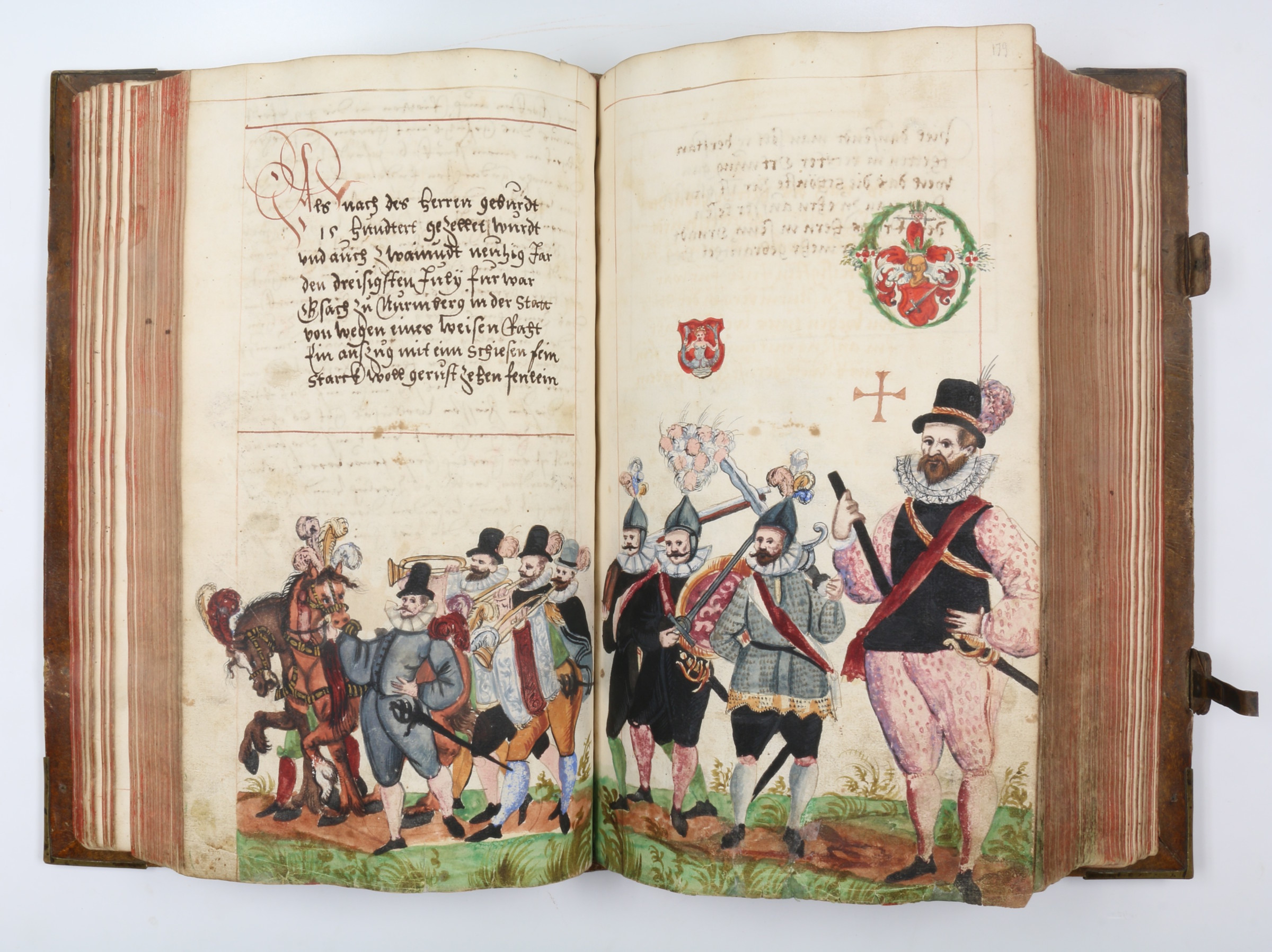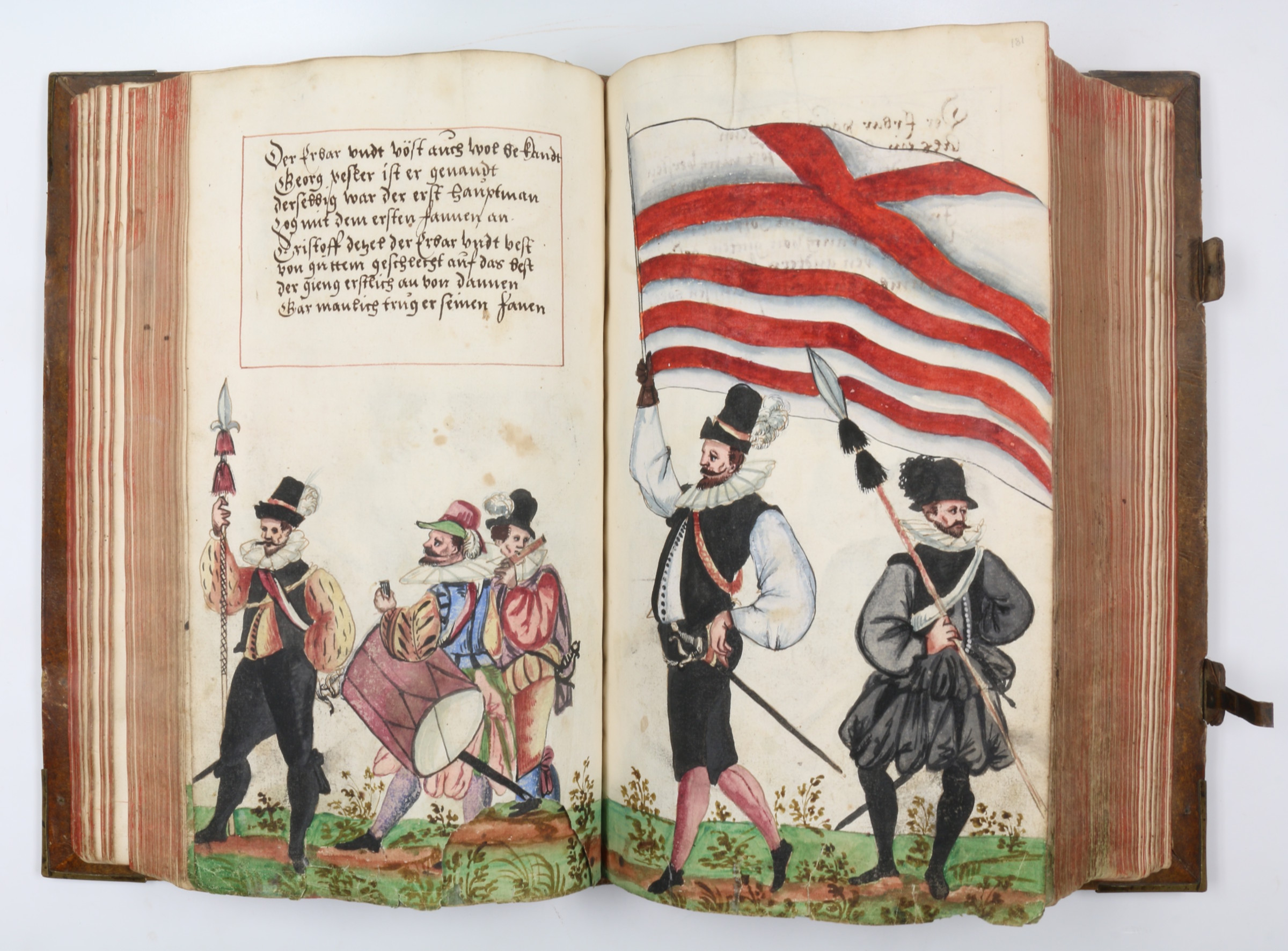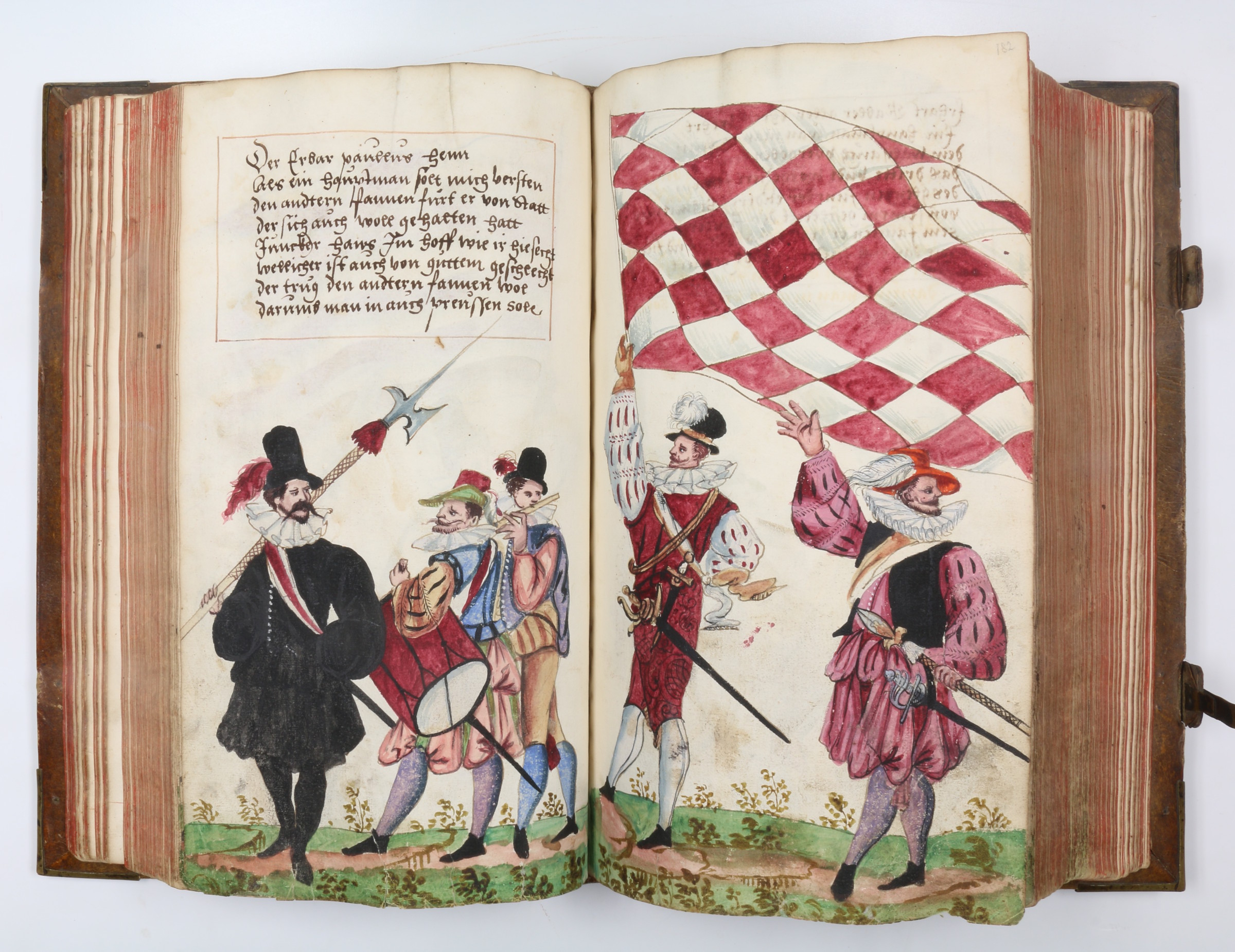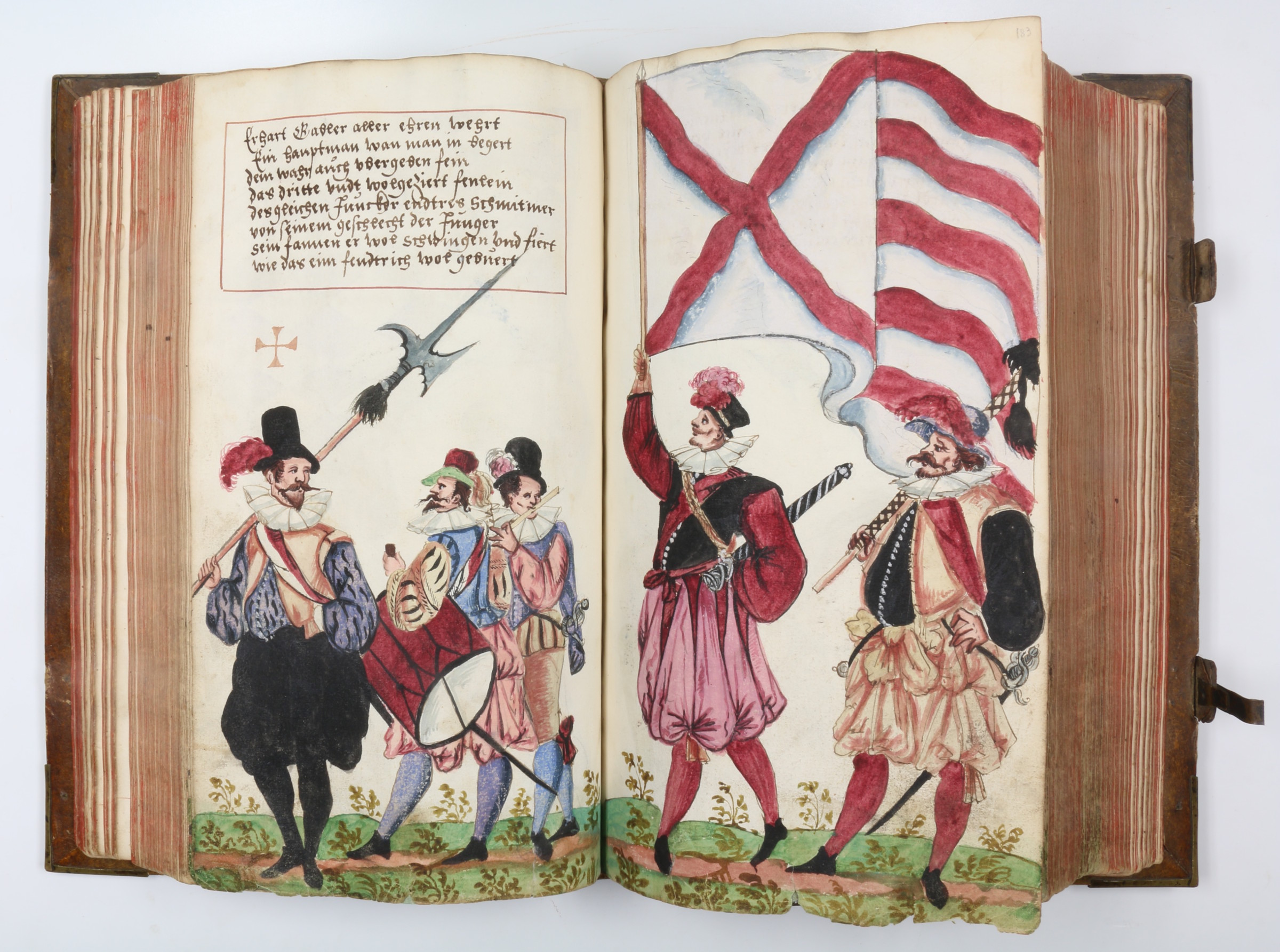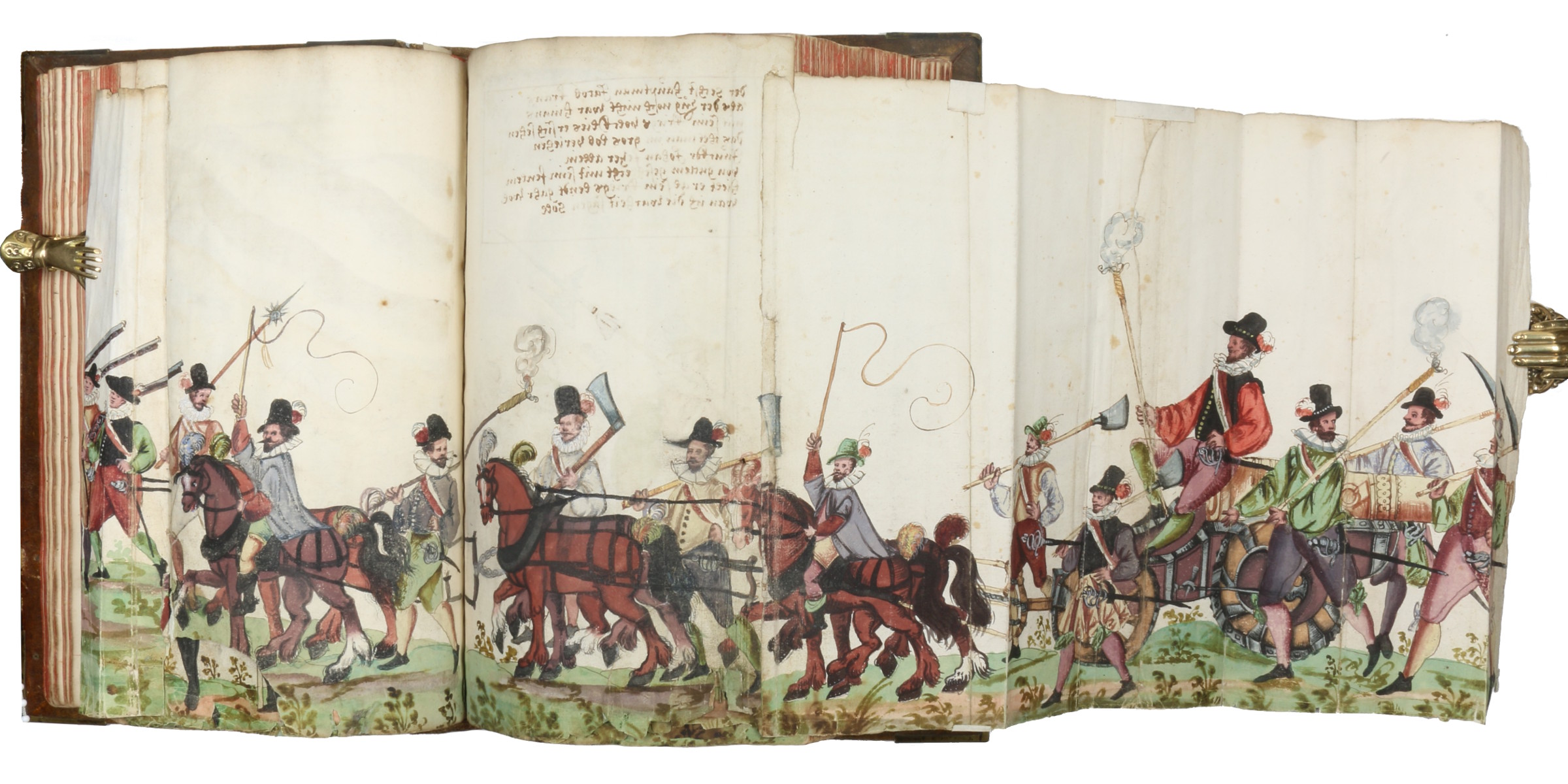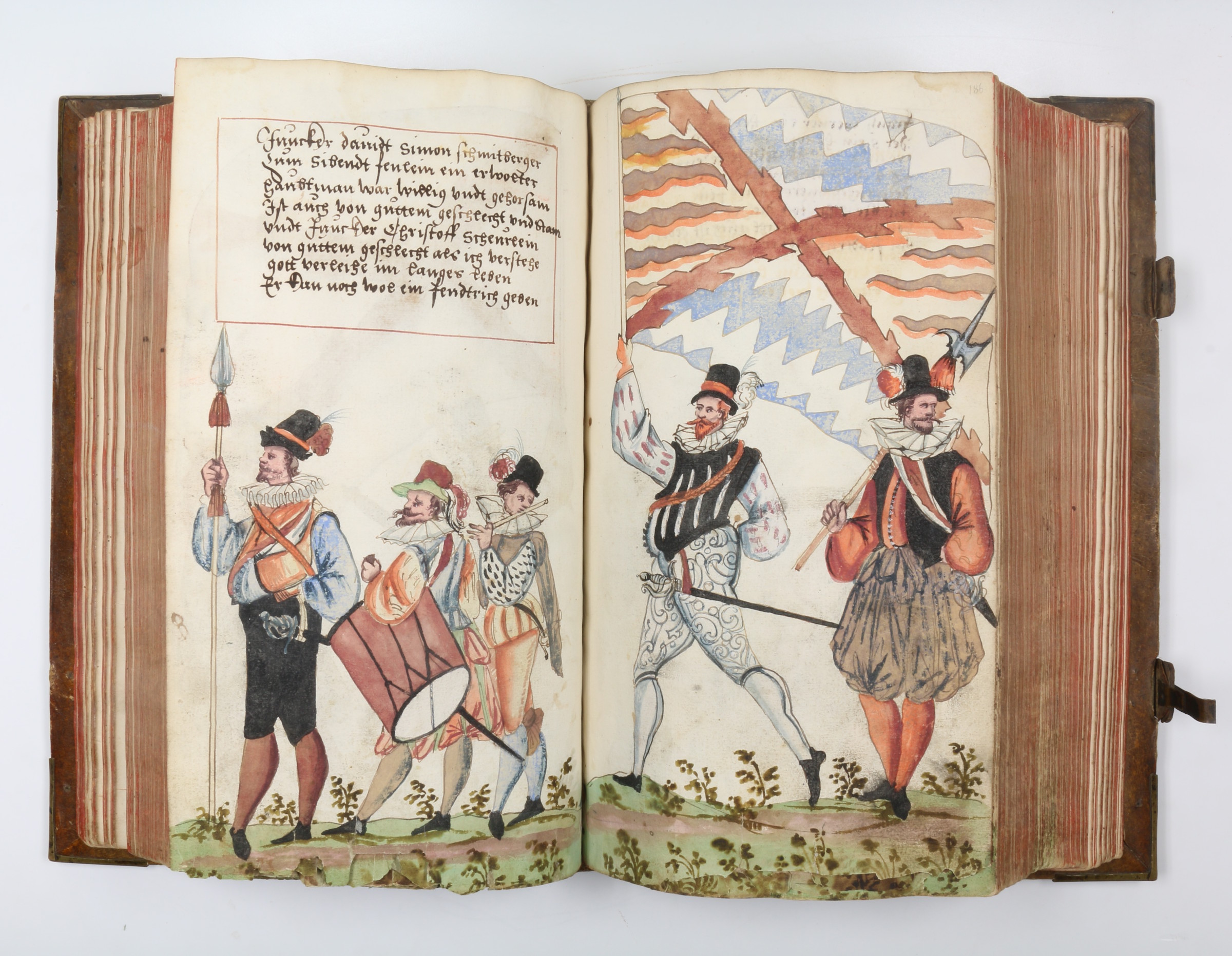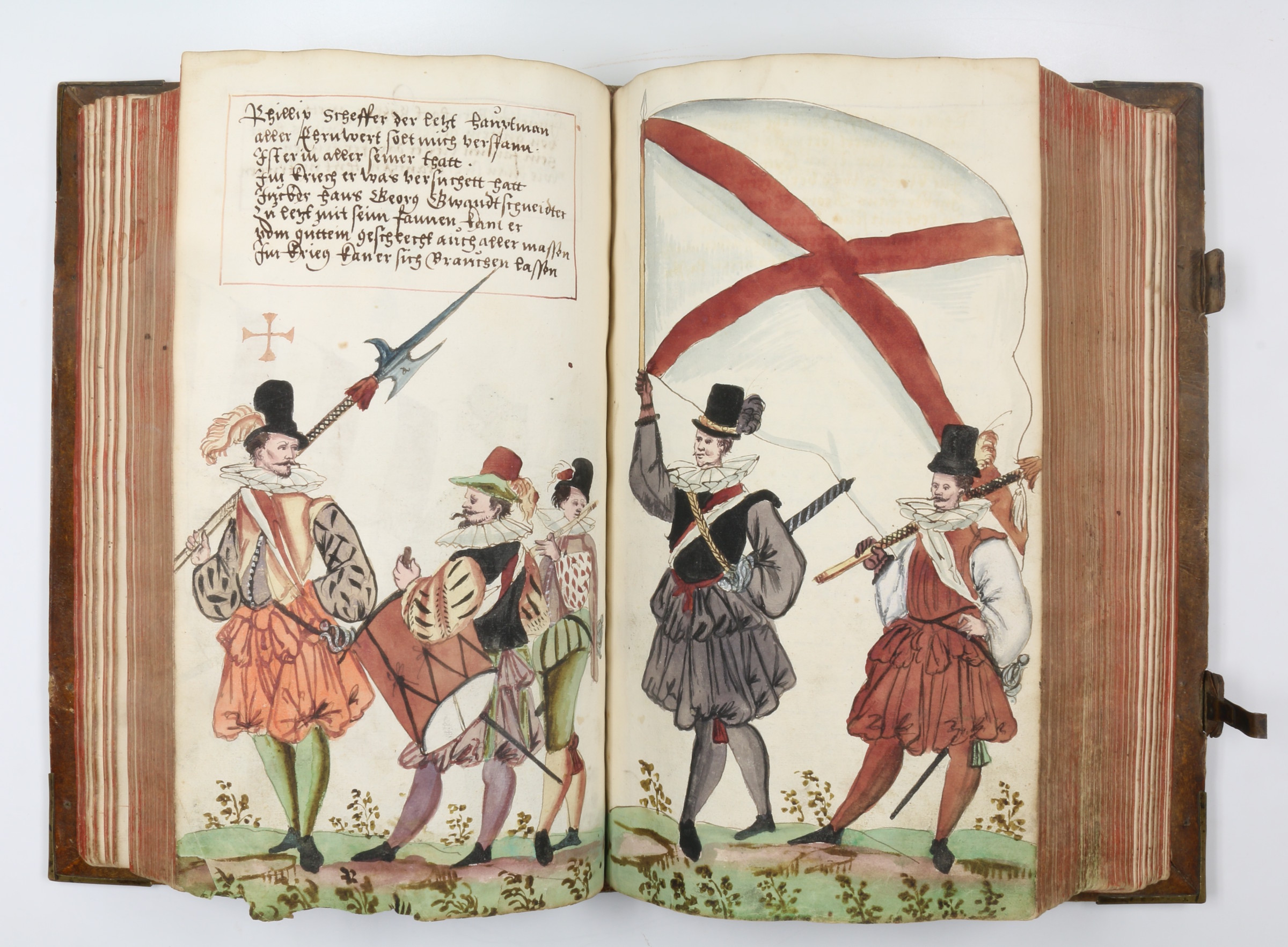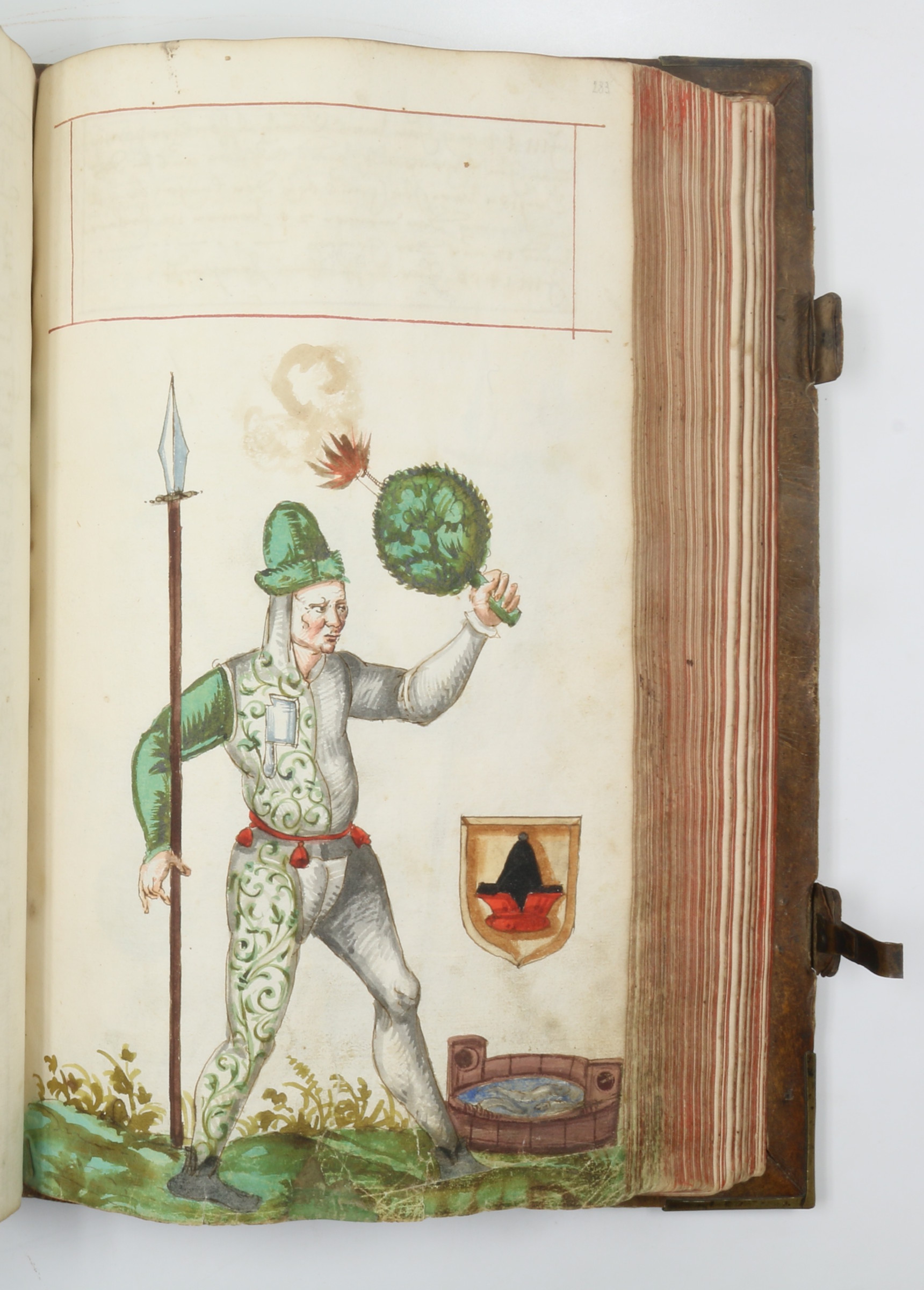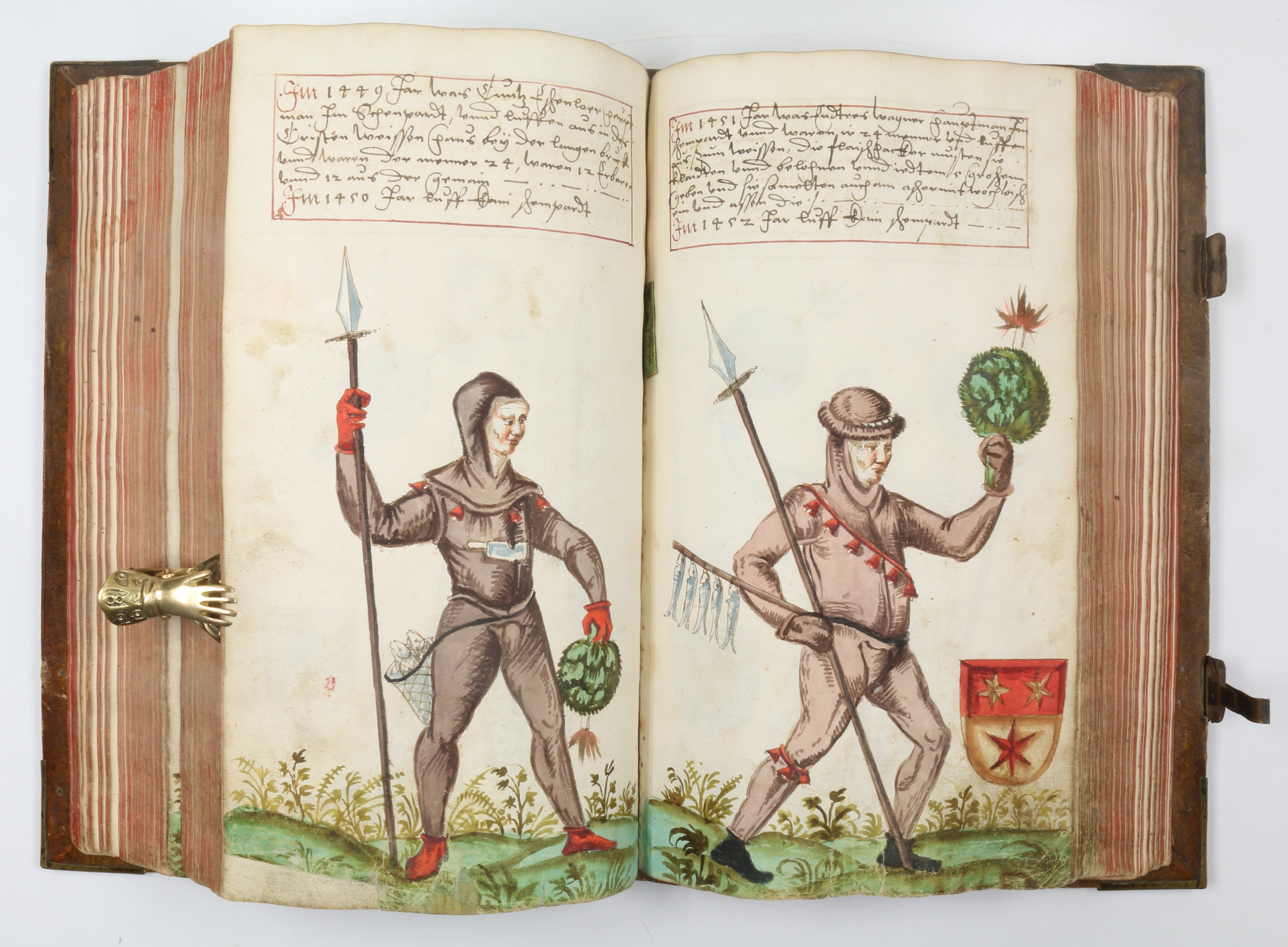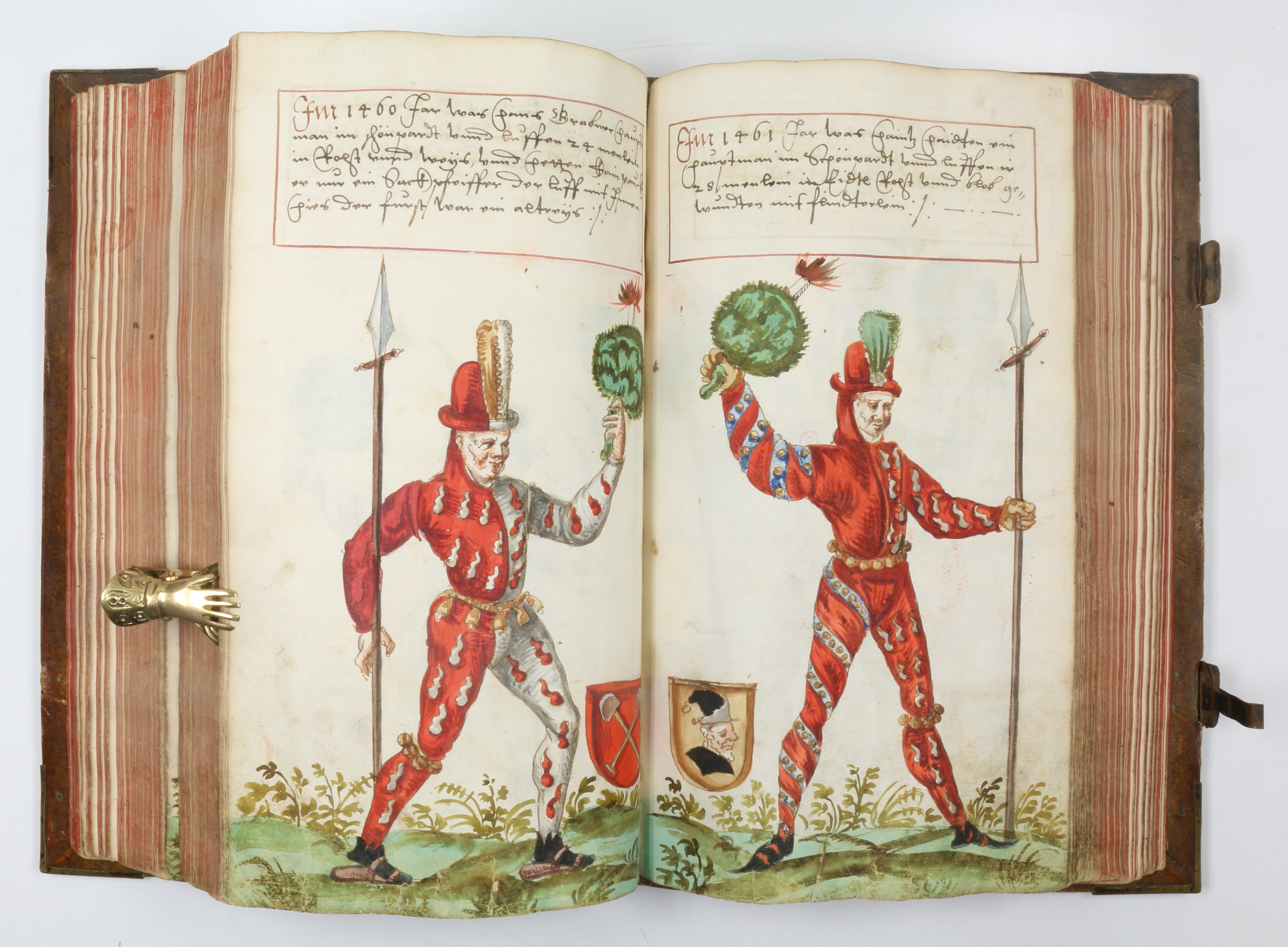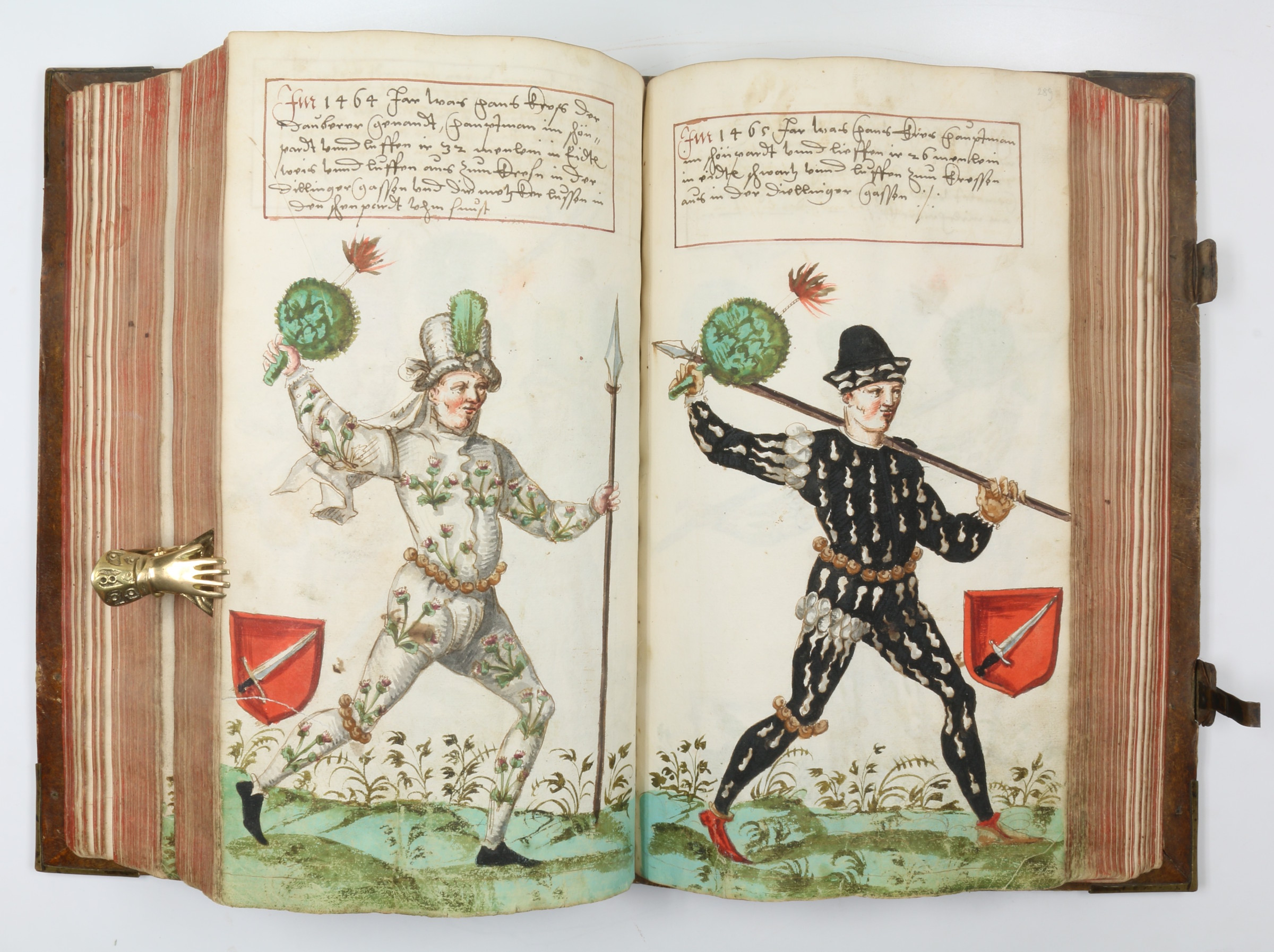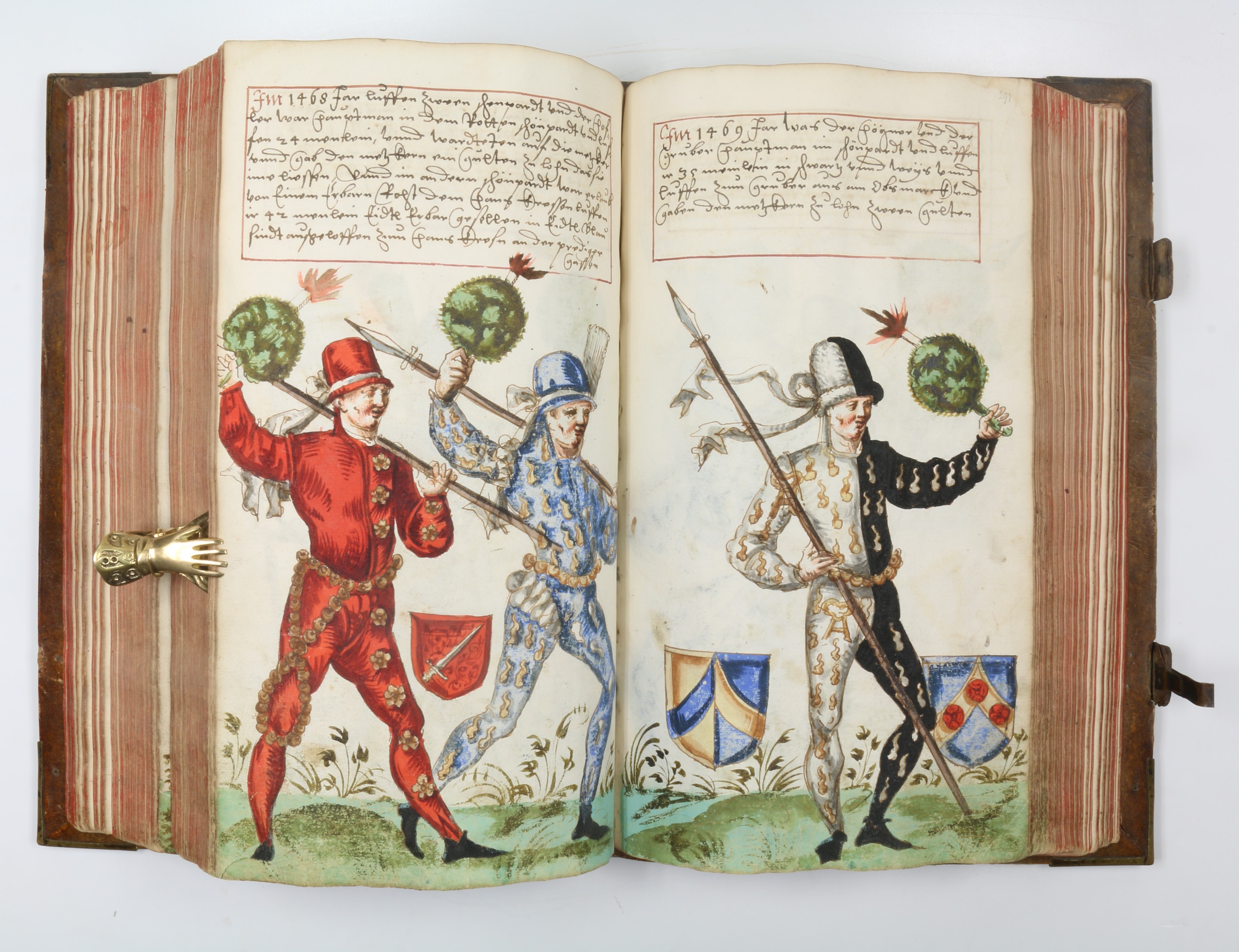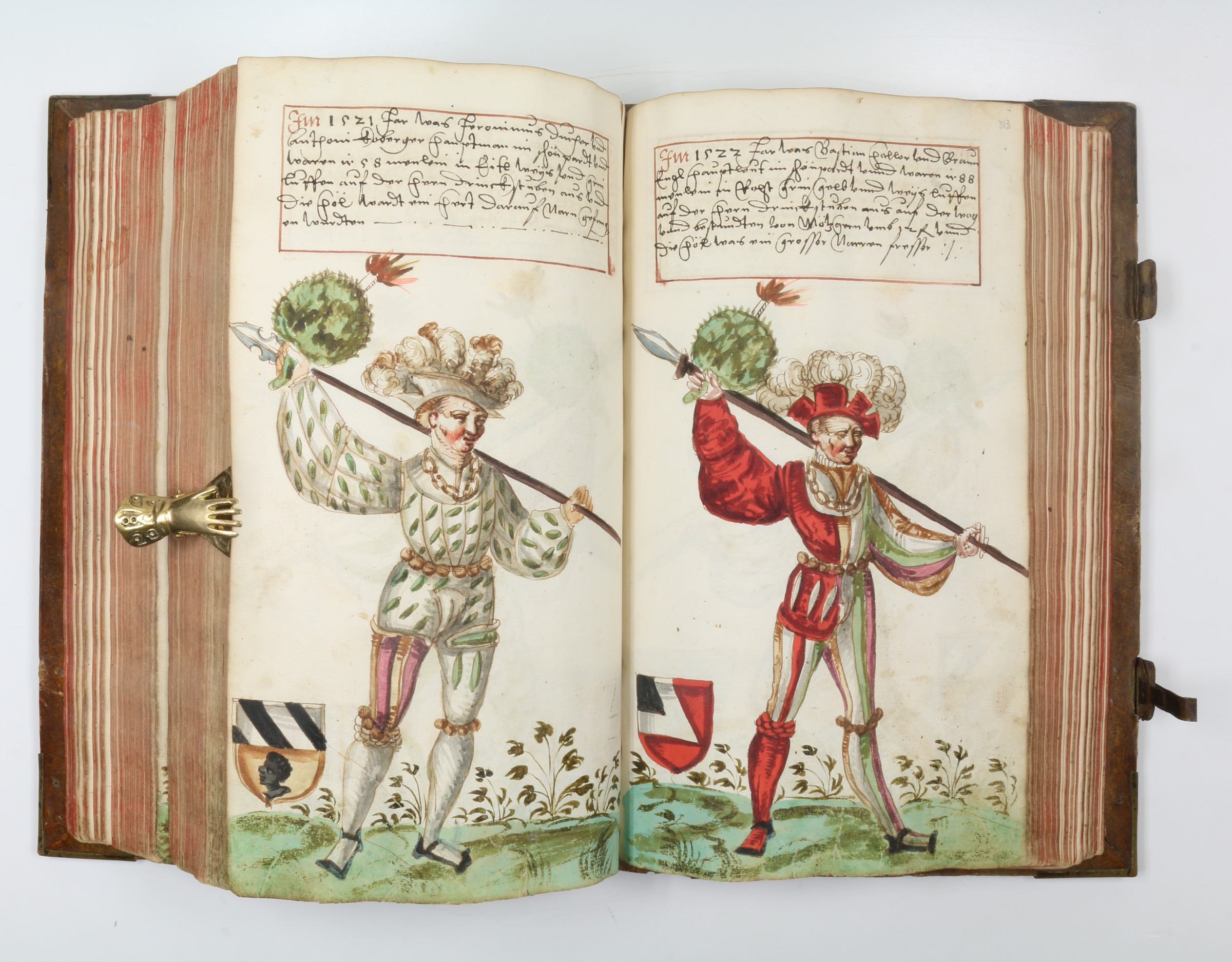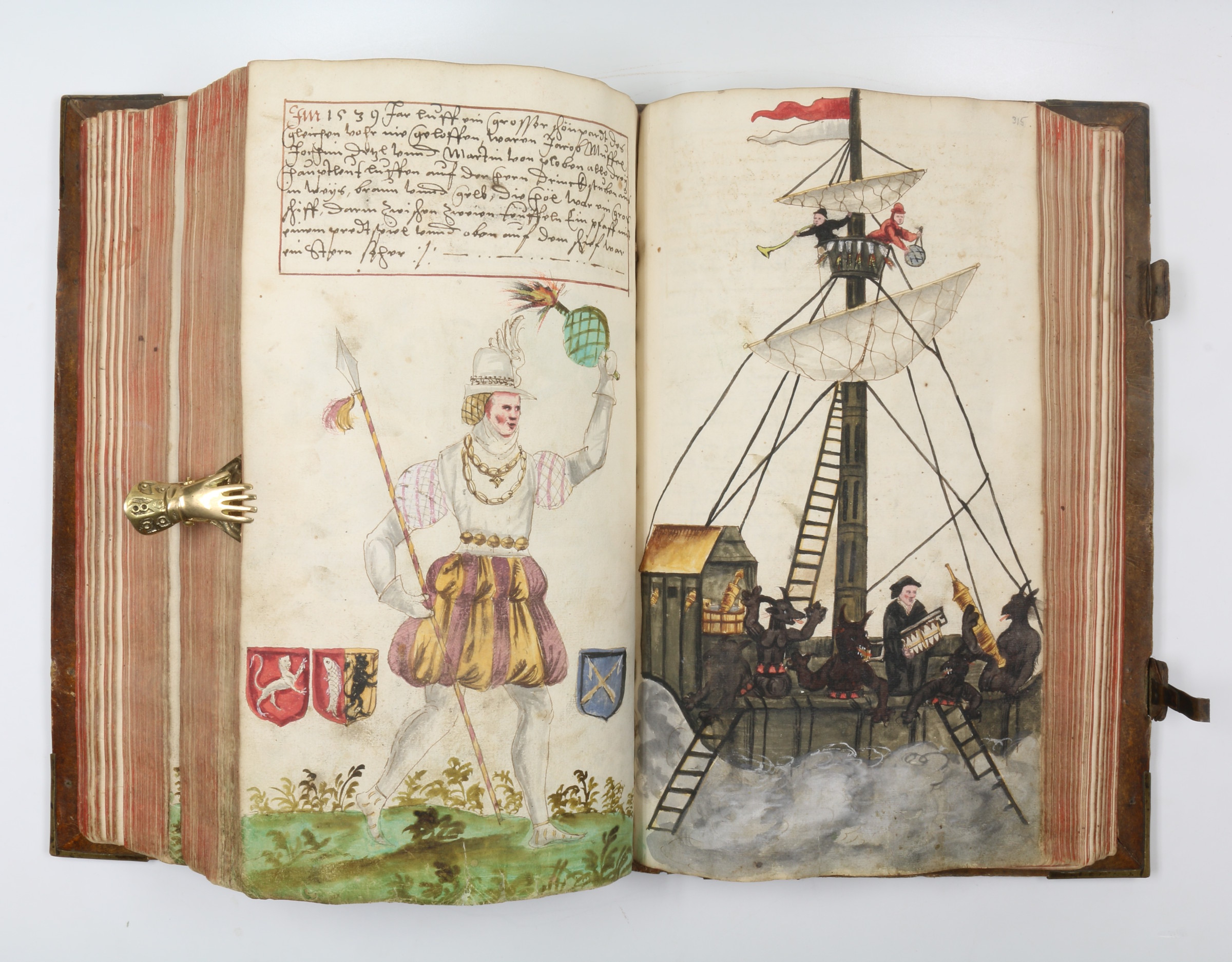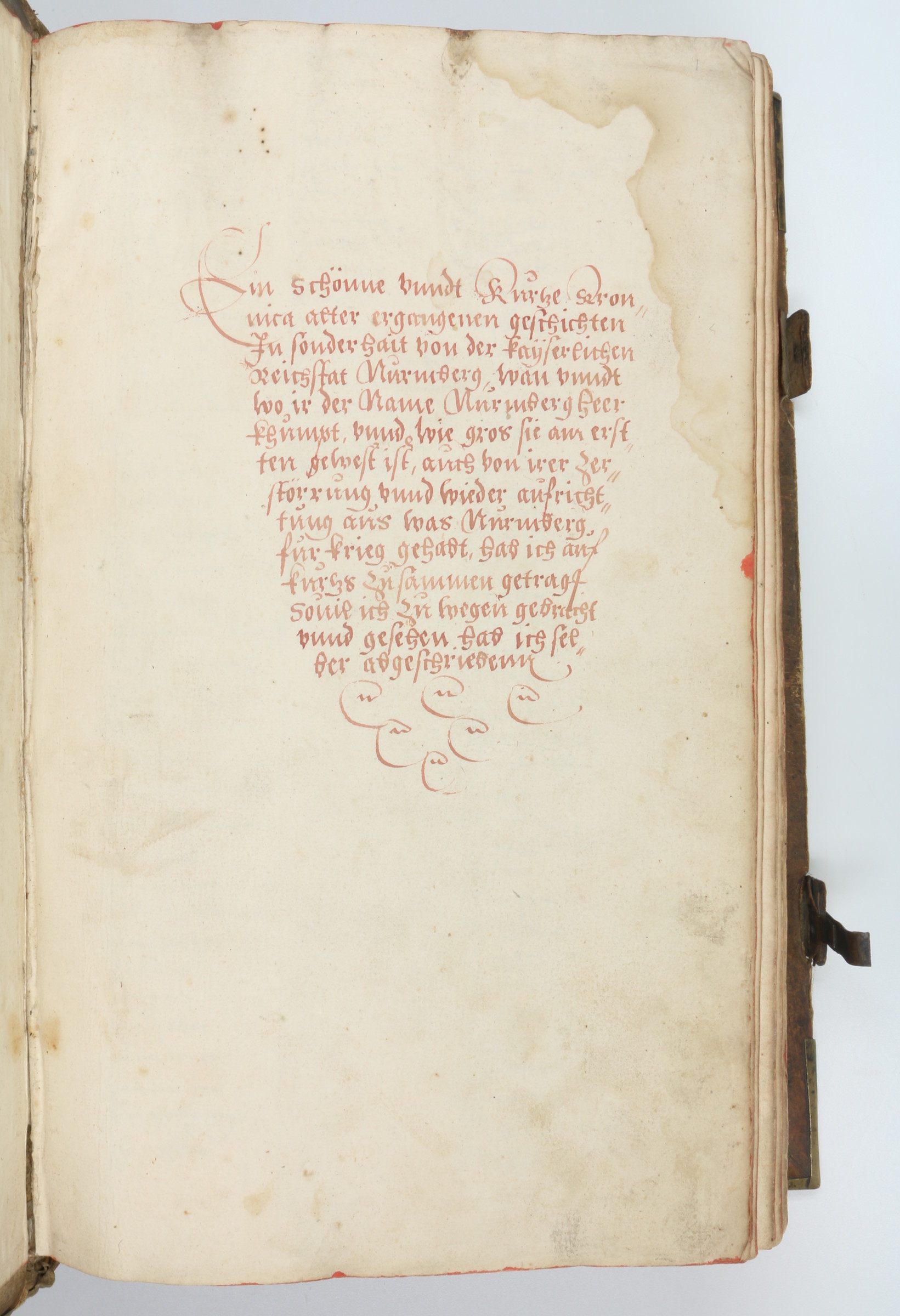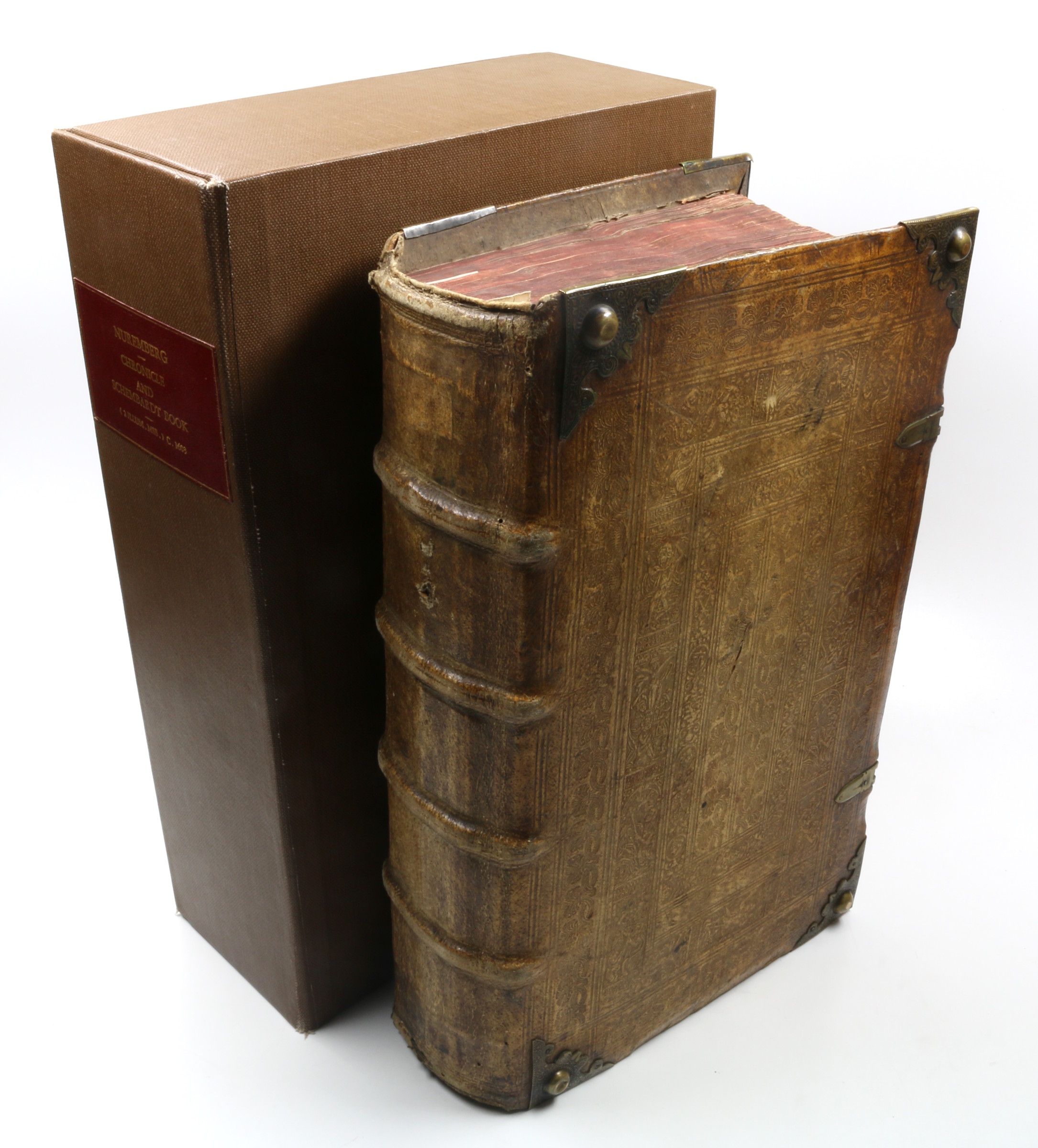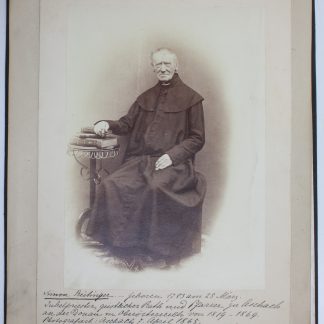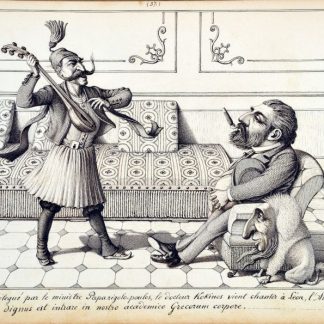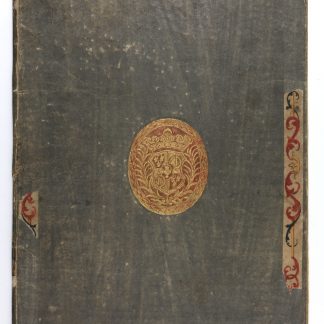[VERKAUFT]
Dieses Stück ist bereits verkauft. Am Ankauf eines gleichwertigen Exemplars bzw. von Stücken ähnlicher Bedeutung sind wir immer interessiert.
The Nuremberg Carnival, Chronicle and City Records, Illustrated and Explained for One of the Participating Families
Ein schönne unndt kurtze Kronnica alter ergangenen geschichten insonderhait von der kayserlichen Reichsstat Nurmberg (Bound with:) Schemverdt buch von 1449 bis auff 1539 (Bound with:) Alle die Genandten des Grossen und klainern Rahts, so im gnadten Buch, des 1560 Jars alhie in Nurmberg von Neuem bestettigt.
Folio (225 x 353 mm). German manuscript on paper, splendidly illustrated. 440 leaves (including 119 blanks), complete (later pencil foliation 1-439, skipping a leaf after 188). 24 pages painted in full colour showing a continuous procession beneath panels of text, two of these pages with fold-out extensions pasted on, 64 illustrations of full-length masked and costumed figures identified by coats of arms and beneath text panels outlining the carnival of that year. Contemporary panelled pigskin stamped in blind with brass cornerpieces, remains of clasps. All edges red. Stored in a brown cloth box with leather lettering-piece.
A splendid authorial copy of a 1603 chronicle of the city of Nuremberg, combined with pictorial presentation of its most celebrated public spectacle (a so-called "Schembartbuch") and precise records of the city's civic appointments and government. Commissioned by William Kress von Kressenstein, a member of one of Nuremberg's most renowned patrician families, the present manuscript is illustrated with a total of 88 elaborate, full-page watercolours by a skilful and experienced artist, obviously trained in the Augsburg-Nuremberg area with such masters as Hans Schäufelein, Hans Sebald Beham, or Jörg Breu the Younger. Mentioning numerous members of the Kress family, the Chronicle (ff. 1-224 in our manuscript) reports notable events from the founding of the city in 1139 until 1603 and is especially remarkable for including an account of a 1592 parade of the municipal militia, not otherwise documented in such detail: 24 pages in full colour form a continuous illustration of this procession, showing standard bearers, a large field gun drawn by six horses, musicians, numerous officers, all distinguished by their coat of arms painted above their heads, together with their commander - the latter himself identified as a Kress von Kressenstein.
The two-page verse chronicle on the origin of the "Schembartlauf", a carnival parade held on Shrove Tuesday in Nuremberg from 1449 to 1539, is followed by 64 full-page illustrations of costumed figures, one for each year in which the carnival was held. Offering a history of changing dress over nearly a century, the watercolours portray the participants dressed up in garments richly decorated with embroidery and ribbons, and often with bells that jingled as they ran through the streets. Again, each individual portrayed is accompanied by his coat of arms, enabling us to identify among the participating perfomers Hans Kress, who acted as captain ("Hauptmann") of the Schembart procession in 1464, 1465, 1468 and 1495. A fantastic galley with a crew of devils, part of the final show held in 1539, concludes the cycle of illustrations. According to Sumberg, some 80 manuscripts recording the Schembartlauf have survived, all of which can be dated after 1540, when the carnival festivities had ceased; they are thus a retrospective commemoration of the event itself. None of the Schembart manuscripts was ever printed until the second half of the 18th century. "Each manuscript is unique, and all are rare" (Reed, 145).
The third and last group of texts (ff. 316-414) in the present hefty folio reports, among other matters, on the municipal elections and records by name all appointed council members and office holders in the city of Nuremberg from 1477 to 1603.
Creasing, tears and some losses from lower edges of ff. 179-188 and 283-314, one of the fold-out extensions mostly lacking. The finely preserved blind-tooled pigskin binding shows the Annunciation, Baptism of the Christ, Crucifixion and Resurrection.
Provenance: 1. Wilhelm Kress von Kressenstein (1560-1640), engraved armorial bookplate inside upper cover. 2. Princely House of Liechtenstein, their shelfmark on upper pastedown; purchased from H. P. Kraus in 1956. 3. Paul and Marianne Gourary, their sale, Christie's New York, 12 June 2009, lot 314.
S. Sumberg, The Nuremberg Schembart Carnival, 1941. H.-U. Roller, Der Nürnberger Schembartlauf: Studien zum Fest-und Maskenwesen des späten Mittelalters, 1965. M. Reed, Fireworks and Fish Baskets: The Schembart Festival in Nuremberg, Getty Research Journal, no. 4 (2012), pp. 145-152.

